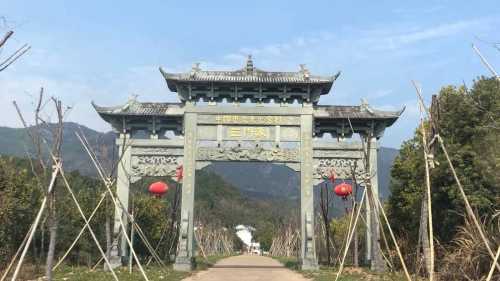App
Customer Support
Find Bookings
Popular Trip Moments
Found it! Zhejiang's own "Altay" | No wonder it's called the Zhejiang version of Altay—Longyou is breathtakingly beautiful! ||| With mountains, water, and little flowers, the uncommercialized natural scenery is stunningly gorgeous. | Hidden Zhejiang Adventures Revealed! Explore the Essence of 9 Cities in One Go | Just got back from Quzhou, here’s some honest advice! A nanny-level travel guide | Spicy & Addictive | Ultimate Quzhou Travel Guide | Zhejiang | Quzhou | The coffee shop is filled with the brown tones of the Showa era | Enter the Starlit Dream of Longyou: A New Luminous Secret Realm in Quzhou! | Longyou, Quzhou 3-Day, 2-Night Trip | Quzhou Hidden Gem | Longyou Tianyuan Resort Hotel, Begin Your Peach Blossom Dream!!! | An Unforgettable Value! This Zhejiang Hotel Offers Incredible Value for Your Money! | Exploring the Hidden Gems of Quzhou: A Hiker's Paradise | Discovering Longyou: A Hidden Gem in Zhejiang | Are you also attracted by Longyou's charm? | Quzhou: The Underrated Beauty of Zhejiang You Need to See | A 6-Day Tour of Quzhou and Lishui: A Super Detailed Itinerary | Jinshi Gate Tower at Longyou Residential Houses, Zhejiang | The Dai Residence at the Longyou Residential Houses in Zhejiang | Yongmutang, Longyou Residential Courtyard, Zhejiang | The Ma Clan Ancestral Hall in Longyou Residential Complex, Zhejiang | Longyou Residential Garden, Zhejiang: Gaogang Qifeng | Juxing Hall in Longyou Residential Courtyard, Zhejiang | Zhejiang Longyou Residential Houses Zishu Hall | The Yu Family Residence at the Zhejiang Longyou Residential Courtyard | The Wu Chunxiang Residence in the Dananmen Historic District of Longyou, Zhejiang | Zhejiang Longyou Museum | Tangyan Hall | The Wang Clan Ancestral Hall in Zeshui Village, Longyou, Zhejiang | Zeshui Xu Shaolu Residence in Longyou, Zhejiang | Sanmenyuan Ancient Village in Longyou, Zhejiang
Recommended Attractions at Popular Destinations
Attraction near Bangkok | Attraction near Manila | Attraction near Tokyo | Attraction near Taipei | Attraction near Hong Kong | Attraction near Seoul | Attraction near Kuala Lumpur | Attraction near Los Angeles | Attraction near Shanghai | Attraction near New York | Attraction near Shenzhen | Attraction near Osaka | Attraction near Singapore | Attraction near London | Attraction near Guangzhou | Attraction near San Francisco | Attraction near Beijing | Attraction near Macau | Attraction near Bali | Attraction near Jakarta | Attraction near Paris | Attraction near Ho Chi Minh City | Attraction near Istanbul | Attraction near Phuket | Attraction near Chicago | Attraction near Seattle | Attraction near Toronto | Attraction near Orlando | Attraction near Cebu | Attraction near Chiang Mai
Popular Restaurants in Longyou
XIAO JIAO LV LV ROU HUO GUO | 杨爱珍大排档(龙游店) | 王阿盖手工小吃(环城西路店) | 菲滋意式餐厅(龙游东方店) | 鲜目录·中国寿司(兴龙北路店) | 菜地餐厅 | McDonald's (quzhoulongyoudongfangguangchang) | YI MAI PI SA | 大丰收家常菜馆 | Fengjiadayuan | 听涧·灵山江轻奢艺术民宿·私厨餐厅 | Jinqiuyuanshishang Restaurant | YANG ZAI KU PAO | 肯德基(太平店) | HUA HUA YU DIAN | 英爵咖啡(龙游店) | 忆炊烟创意餐厅(人民路店) | LI LI FAN DIAN TAI PING DONG LU DIAN | 不老神鸡(龙北店) | 不老神鸡(兴龙店) | 1Diandian (longyourenminnanlu) | Sunxianshengyatou (longyou) | 伟忠烧烤 | 李记香辣馆(龙游店) | 马氏馄饨 | 潮辣矿泉水火锅(人民南路店) | BEI XIANG SHANG YUAN | 林语咖啡 | 好享时光 | 竹乡餐厅(溪口店)
Popular Ranked Lists
Top 5 Best Things to Do in Tonghua | Popular Luxury Hotels Near Qazim Pali | Popular Must-Visit Restaurants in Dalat | Popular Must-Visit Restaurants in Koh Samui | Popular Best Things to Do in Zhongxiang | Popular Luxury Hotels Near Kyle | Top 3 Best Things to Do in Zhoukou | Popular Must-Visit Restaurants in Chaozhou | Popular Luxury Hotels Near Cour-Cheverny | Popular Best Things to Do in Guang'an | Popular Best Things to Do in Jingmen | Popular Luxury Hotels Near Cruz Bay | Popular Luxury Hotels Near Stavern | Popular Premium Hotels in Iga | Popular Must-Visit Restaurants in Yangzhou | Popular Must-Visit Restaurants in Hanoi | Popular Must-Visit Restaurants in Singapore | Popular Best Things to Do in Suifenhe | Top 4 Best Things to Do in Hotan Prefecture | Popular Premium Hotels in Gilgit-Baltistan | Popular Best Things to Do in Lvliang | Popular Must-Visit Restaurants in Munich | Popular Best Things to Do in Libo | Popular Must-Visit Restaurants in Athens | Popular Best Things to Do in Suining | Popular Best Things to Do in Jieyang | Popular Luxury Hotels Near Mtsvane Kontskhi | Popular Luxury Hotels Near Antrim | Top 3 Best Things to Do in Sanmenxia | Popular Best Things to Do in Liancheng
Payment Methods
Our Partners
Copyright © 2025 Trip.com Travel Singapore Pte. Ltd. All rights reserved
Site Operator: Trip.com Travel Singapore Pte. Ltd.
Site Operator: Trip.com Travel Singapore Pte. Ltd.

















